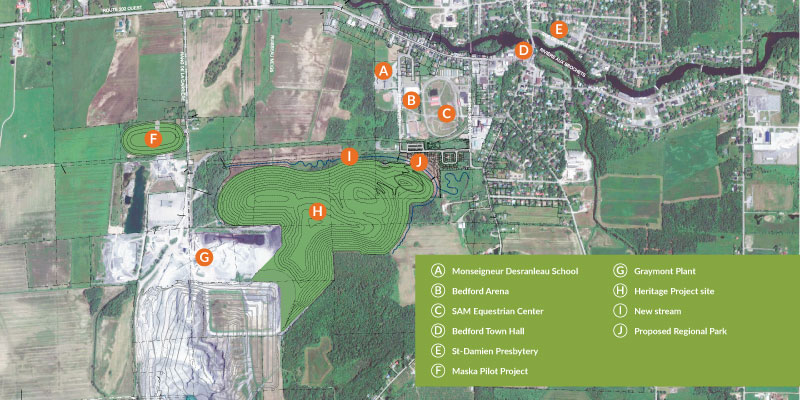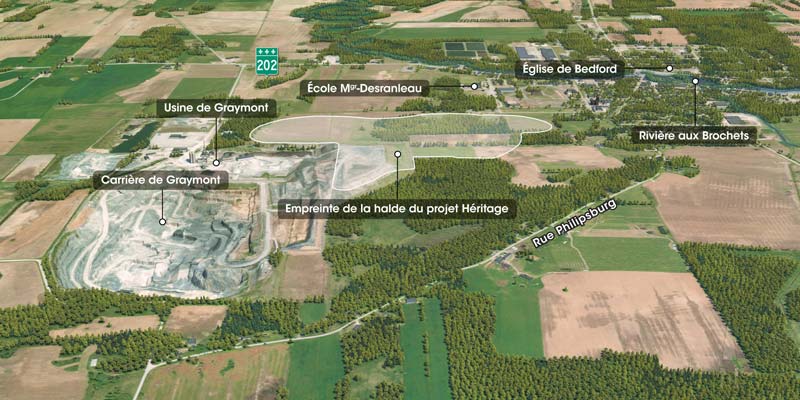An Innovative ProjectBorn Out of Local Consultations
The Heritage Project was conceived following numerous discussions, with the help and support of key local players. Since 2012, the community has been actively involved in planning for the project, most notably at the municipal level. A comprehensive Development Plan detailing plans for the project was presented to local authorities and citizens. Discussions were concluded in 2016, with the signing of individual agreements with the City of Bedford, the County of Bedford and the Municipality of Stanbridge Station. The project also received approval from Quebec’s Commission de protection du territoire agricole (CPTAQ) and authorization certificates from the Ministry of Sustainable Development, Environment and the Fight against Climate Change, following completion of a compliance-assessment process. Graymont is now awaiting the issuance of final permits before launching the development phase.

